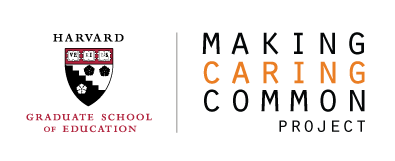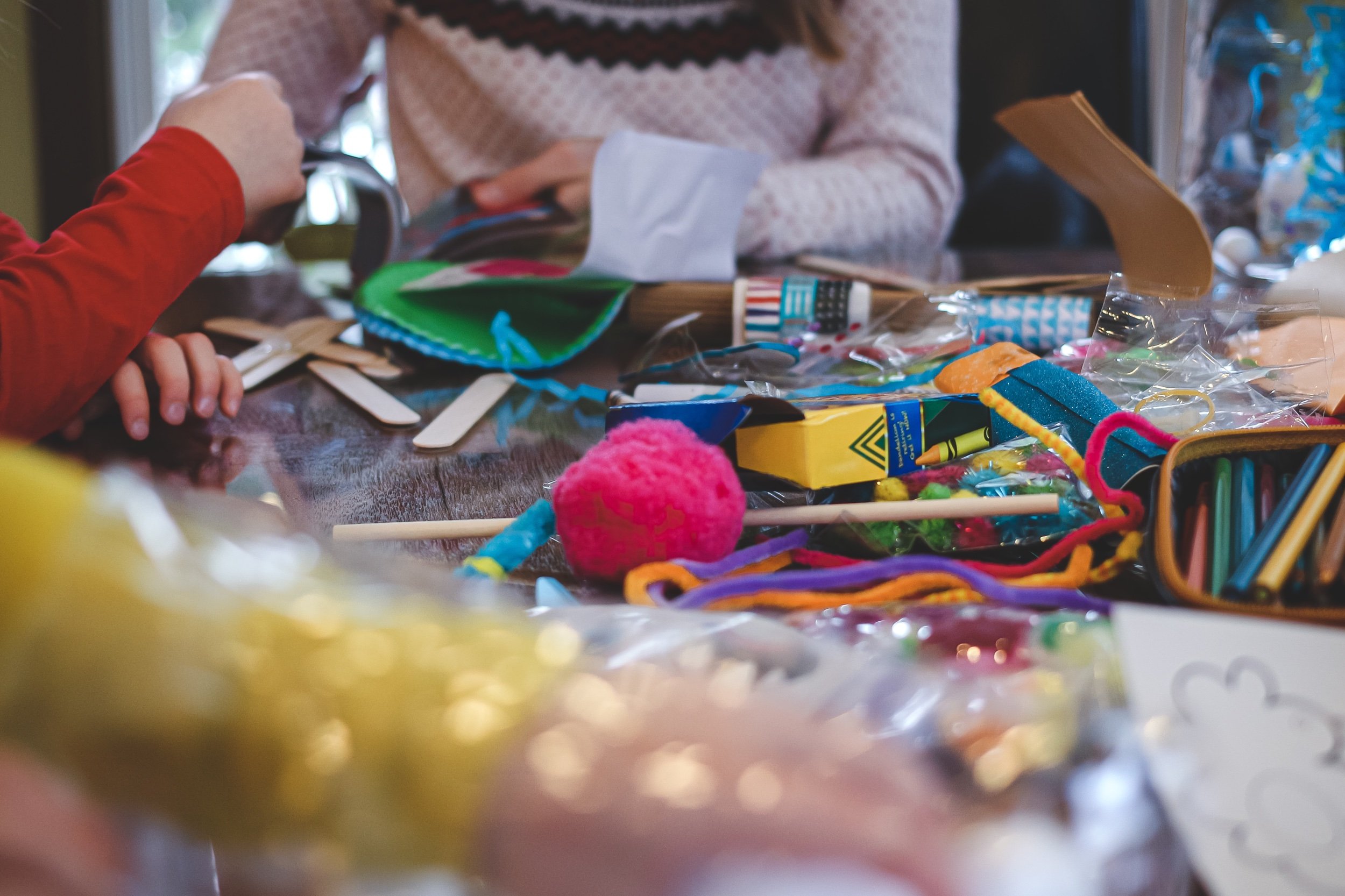Build-It Challenge can be used regularly with students to promote teamwork and communication.
Read MoreSort by topic
- Bias
- Bullying
- COVID
- CSN
- Caring and Empathy
- College Admissions
- Educator Resources
- Elementary School
- For Educators
- Gender
- Mental Health
- Moral and Ethical Development
- Relationship Mapping
- Romantic Relationships
- School Culture and Climate
- Sexual Harassment and Misogyny
- Social - Emotional Learning (SEL)
- Social-Emotional Learning (SEL)
- Talking Across the Aisle
- gender bias
Newsball is a game that can be used regularly with students to build a foundation for the practice and habit of empathy and active listening, while building classroom community.
Read MoreEducation Now is an initiative by the Harvard Graduate School of Education to respond to the dramatic changes in the field of education in the wake of coronavirus. Making Caring Common’s Rick Weissbourd hosted six episodes in spring 2020 on connection, leadership, college admissions, teaching, moving forward, and the experiences of high schoolers.
Read MoreThis tool is intended to help high school educators reflect on whether—and to what extent—they are creating a healthy college admissions culture and climate.
Read MoreA healthy, sane college admissions process depends on high schools and parents working together effectively. College counselors are often the bridge between schools and parents and have a crucial role in this collaboration.
This resource is designed to guide counselors in their work with parents. It is designed for school communities where students experience excessive achievement pressure in the college admissions process.
Help your students learn how to prioritize and balance their commitments with this time management lesson plan.
Total time: 1-1.5 hours over 2-3 sessions.
Read MoreHow can high schools shape a college search and application process that promotes rather than undermines ethical character? What are key ways that high schools can reduce harmful achievement pressure and promote equity and access that advance the recommendations in our first Turning the Tide report? We offer the following guideposts.
Read MoreThis webinar from Share My Lesson explores our report The Talk: How Adults Can Promote Young People’s Healthy Relationships and Prevent Misogyny and Sexual Harassment, which highlights these issues and offers insight into how adults can begin to have meaningful and constructive conversations with young people to promote healthy relationships and prevent misogyny and sexual harassment in their lives.
Note: Registration is free and the webinar may fulfill one hour of PD credit.
Read MoreThe following is a partial list of resources for educators interested in preventing misogyny and sexual harassment.
These resources offer useful activities, information, websites, and/or programs/curricula. We’ve tried to identify key resources, but there are a vast number of resources on these various topics, and we surely missed some. We also want to underscore that while we think each of the identified resources contains valuable information, we do not endorse all the recommendations/views in these resources. Some of the resource descriptions listed below have been pulled from organizational websites.
Read MoreMany teachers have heard or seen students saying things that are misogynistic, objectifying, insensitive, or disrespectful based on gender, sexuality, or sexual orientation. Because these comments may catch us off guard and are often sensitive in nature, many adults struggle to know what to say in the moment. By thinking through and practicing our responses in advance, we can be prepared the next time we hear these comments in our schools.
Below are practice scenarios for teachers based on real-life student conversations and interactions. These scenarios can be reviewed by individual teachers or as part of a professional development program. It may be particularly powerful for teachers to work in pairs or small groups to discuss and practice potential responses.
Read MoreThis audit is intended to help educators reflect on the policies and practices of their school related to young people’s healthy romantic relationships, misogyny and sexual harassment, and assault. It is intended to help you answer these questions: Are we doing what is needed to prevent harassment and promote healthy relationships? What more could we do? Please answer each of the following questions about your school by checking “yes,” “no,” or “I’m not sure.” Please also reflect on the “evidence” for your answer—“how you know” the answer or what the answer “looks like” in your school.
Read MoreEducators can use these low-burden tips for preventing bullying and making schools more caring, respectful places.
Read MoreEducators have an important role to play in preventing bullying and promoting social, emotional, and ethical capacities in students.
These resources offer useful activities, information, websites, programs, and curricula. While we think each of the identified resources contains valuable information, we do not endorse all the recommendations or views in these resources. Some of the resource descriptions listed below have been pulled from organizational websites.
Read MoreAs children get older, they face ever more complex situations that can be difficult to navigate.
Particularly salient are moral or ethical dilemmas, which concern issues of fairness, justice, and caring. These are decision-making problems without definitive right or wrong choices that affect other people as well as the self, and thus, they are fruitful exercises in moral reasoning.
With this light-lift strategy, students will practice evaluating and constructing moral or ethical dilemmas to get them thinking critically about others’ perspectives and feelings in challenging situations. Students will reflect on their own judgments of others and the importance of context, and what they themselves could do in challenging times.
Currently, our What Would You Do? strategy is available to schools in our Caring Schools Network. Reach out to Glenn Manning, Senior Program Coordinator at Making Caring Common to learn more about Caring Schools Network.
Read MoreStorytelling is a powerful tool for eliciting emotion and curiosity. It can be especially valuable in prompting students to reflect on their own identities and values, and to recognize that despite people’s differing stories, we all share commonalities. Stories are a great reminder that we are all human and that we are all capable of bridging difference through understanding and connecting emotionally with others.
With this light-lift strategy, students will identify and investigate their personal set of values and what/who matters to them. Students will use these values to guide the telling of (and making sense of) their own story. Using Chimamanda Adichie’s TED Talk “The Danger of a Single Story” as a guide, students will then learn about real people’s stories, particularly those often marginalized or misunderstood. Finally, students will make connections between their own and others’ stories to appreciate the similarities and differences in their values.
Currently, our Story of Us strategy is available to schools in our Caring Schools Network. Reach out to Glenn Manning, Senior Program Coordinator at Making Caring Common to learn more about Caring Schools Network.
Read MoreStudents’ capacity for empathy can be developed by learning to appreciate other people’s stories.
By engaging with others in a structured way and trying to shape a narrative that encapsulates a piece of that person, students will understand the nuances of lived experiences, values, and perspectives. By interviewing others, especially those who may be different from them, they will practice vulnerability and develop trust, which in turn will strengthen their school community.
With this light-lift strategy, students will dive into narratives of self and others to offer more nuanced perspectives and feelings around people’s stories. The narratives will mirror the “Humans of New York” series, and students will study a few of them to get a sense of the expectations (e.g., interviewing other students or faculty members). Humans of Your School provides students with opportunities to connect with those different from them, to listen to different stories and try to understand their different perspectives, and to appreciate differences while also finding commonalities.
Currently, our Humans of Your School strategy is available to schools in our Caring Schools Network. Reach out to Glenn Manning, Senior Program Coordinator at Making Caring Common to learn more about Caring Schools Network.
Read MoreResearch shows that being kind and caring makes people feel good — by recognizing the appreciation of others as well as beginning to view oneself as altruistic or compassionate.
Studies have also shown that feeling care and concern for others is linked to altruism, and an effective strategy to spark caring is to encourage people to imagine what others are going through and how they feel. Kindness and caring are also contagious. Literally. They can spread and influence people to do good deeds beyond their existing networks.
With this light-lift strategy, students reflect and discuss how to encourage more kindness and caring, for themselves and others, at their school and beyond. They will practice regular intentional acts so they become routine and normalized parts of students’ lives. By reporting back, students will learn about each other’s experiences and likely use them as sources of inspiration. The activity encourages a variety of kind and caring acts, including self-improvement.
Currently, our Everyday Caring strategy is available to schools in our Caring Schools Network. Reach out to Glenn Manning, Senior Program Coordinator at Making Caring Common to learn more about Caring Schools Network.
Read MoreResearch shows that “likeness begets liking” and that when people find similarity along various dimensions, they can build a sense of relatedness. This strategy helps students get in the habit of noticing similarities — but it’s also important for students to learn how to acknowledge, appreciate, and even value differences from others.
With this light-lift strategy, students will be given the opportunity to talk about differences and similarities with others through various ways of “grouping” themselves. They will also consider how their opinions or viewpoints might differ from others based on certain elements of their identity or experiences. Critical reflections and discussions will highlight why it matters to understand the experiences of self, and others.
Currently, our One and the Same strategy is available to schools in our Caring Schools Network and to schools participating in the Middle School Kindness Challenge. Reach out to Glenn Manning, Senior Program Coordinator at Making Caring Common to learn more about Caring Schools Network.
Read MoreGetting students to physically stand along a continuum that represents their beliefs or values can be a vulnerable yet empowering experience, and often helps students find commonalities rather than differences.
With this light-lift strategy, students arrange themselves in different configurations based on their level of agreement or disagreement with an ambiguous or open-ended issue or statement. Student discussions and teacher-led questioning promote thoughtful inquiry and engage the class through disagreement in a structured and safe environment.
Currently, our Take a Stand strategy is available to schools in our Caring Schools Network and to schools participating in the Middle School Kindness Challenge. Reach out to Glenn Manning, Senior Program Coordinator at Making Caring Common to learn more about Caring Schools Network.
Read MoreStereotypes are all around us, and we are all prone to stereotyping others without even knowing it. The Confronting Stereotypes strategy and related routines gets students in the habit of noticing and understanding the components of stereotypes, including distinctions from bias and prejudice. In the process, students develop their understanding and concern for certain groups or identities that they might be apt to make assumptions about.
With this light-lift strategy, students reflect on their implicit associations, and learn about the connections with and between stereotypes, biases, and prejudice. Students engage in a stereotype scavenger hunt and generate a list of stereotypes they recognize in their everyday lives and discuss how the stereotypes can be re-framed. They watch and discuss short clips about one girl’s story of inspiration or view different media to discuss its role in perpetuating stereotypes.
Currently, our Confronting Stereotypes strategy is available to schools in our Caring Schools Network and to schools participating in the Middle School Kindness Challenge. The related routines are available below. Reach out to Glenn Manning, Senior Program Coordinator at Making Caring Common to learn more about Caring Schools Network.
Read MoreCommunication and listening skills form the foundation of empathy-building in the classroom and beyond. However, teaching good listening ignores the often poor listening we do daily. By naming and understanding what good listening does not look like, students can better acknowledge their own areas for improvement. The simple yet creative nature of this lesson allows students to reflect on their vulnerabilities, while having fun and building relationships with classmates they might not know very well.
With our light-lift Communication HUB strategy, students will learn about what gets in the way of truly effective listening and practice poor and good listening skills in free-form “School HUB” sessions. Students will create specific goals for their own listening and report back over time.
Currently, our Communications HUB strategy is available to schools in our Caring Schools Network and to schools participating in the Middle School Kindness Challenge. Reach out to Glenn Manning, Senior Program Coordinator at Making Caring Common to learn more about Caring Schools Network.
Read More












